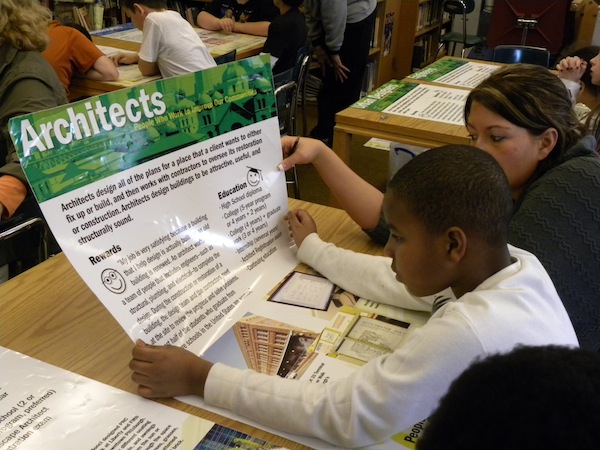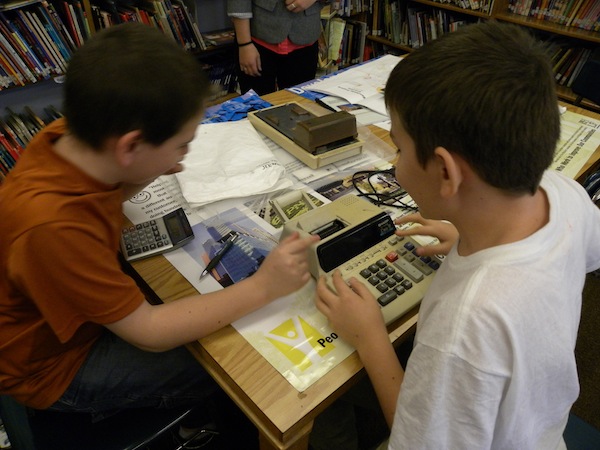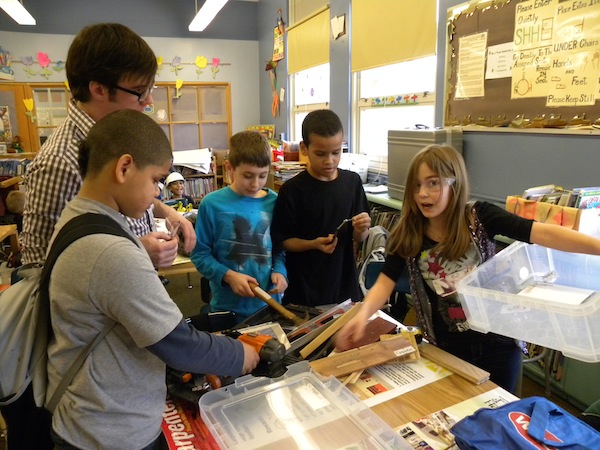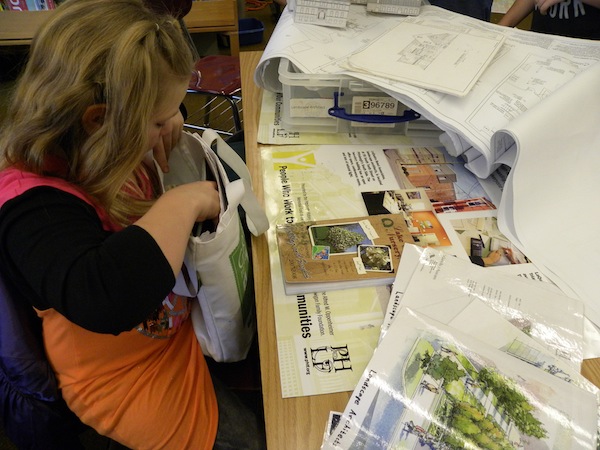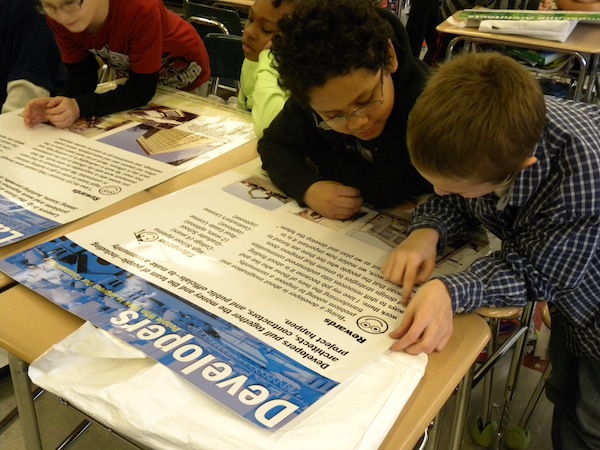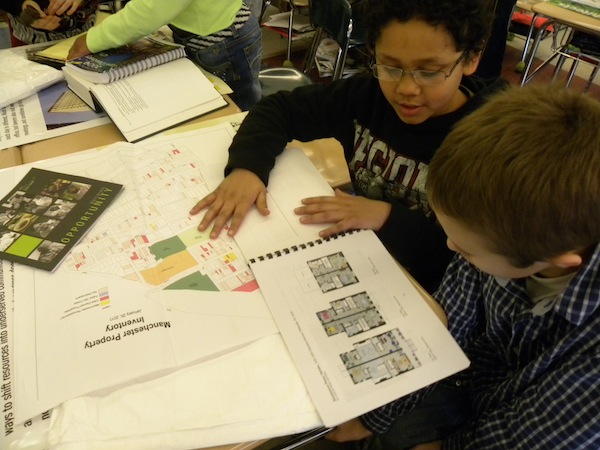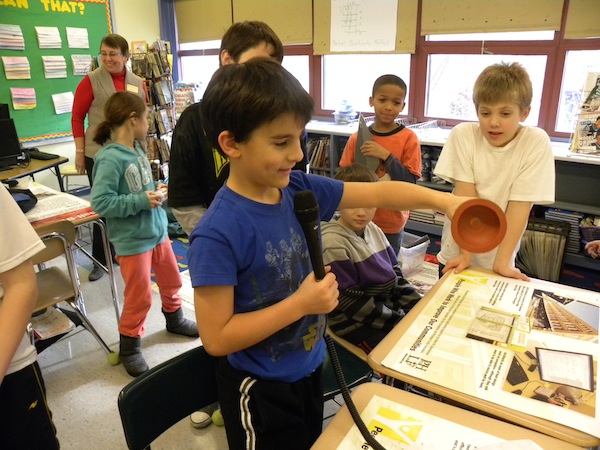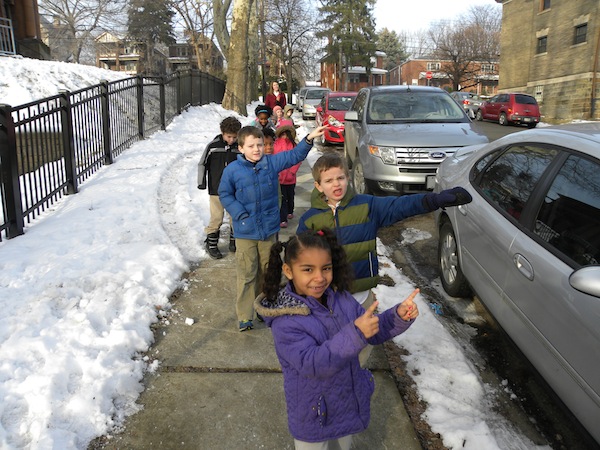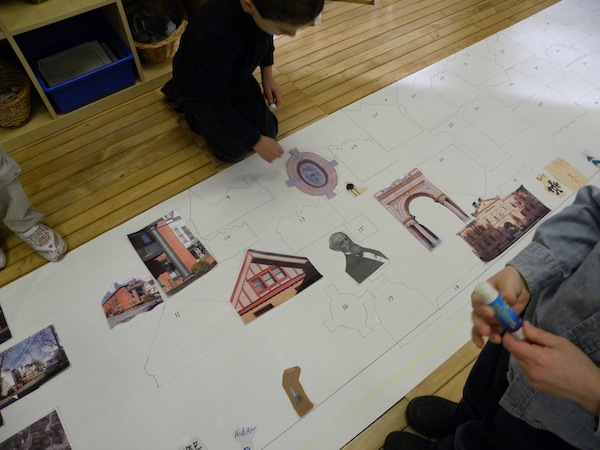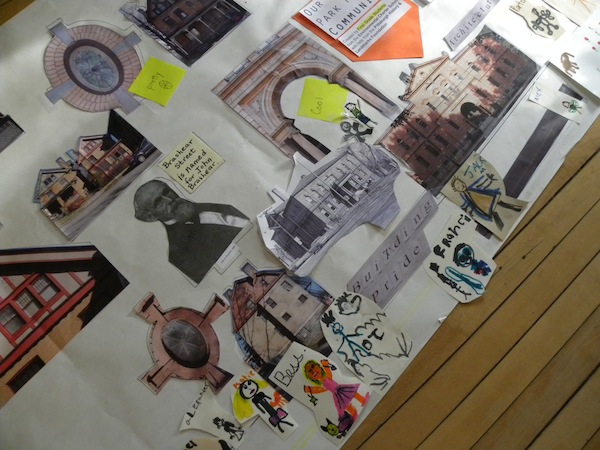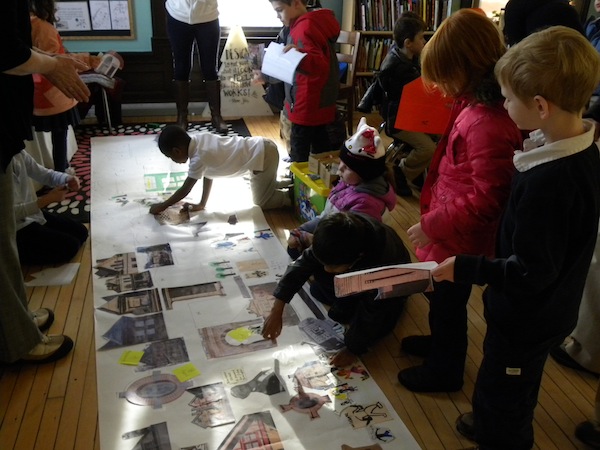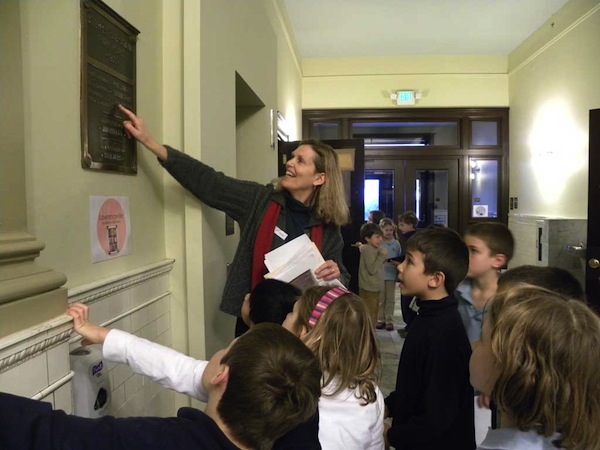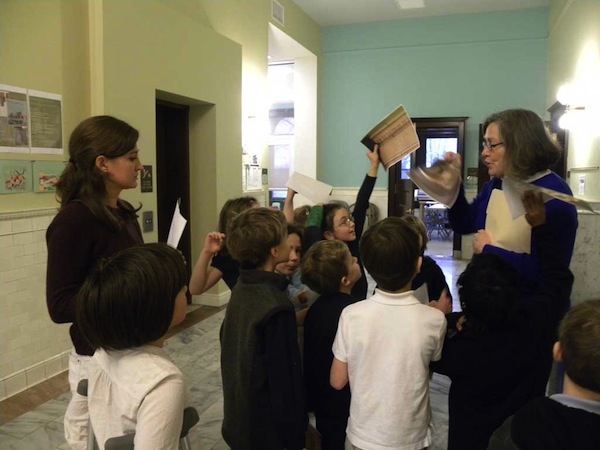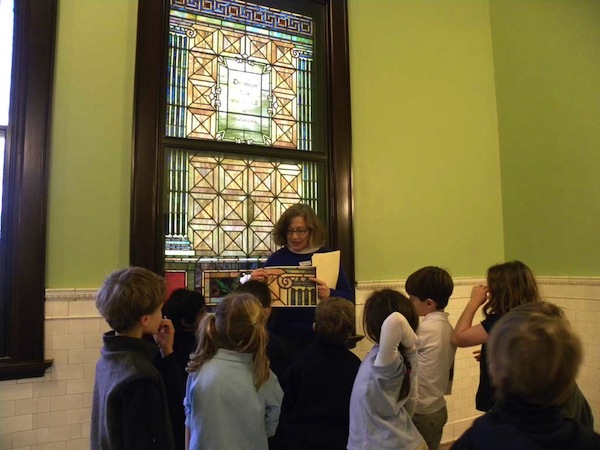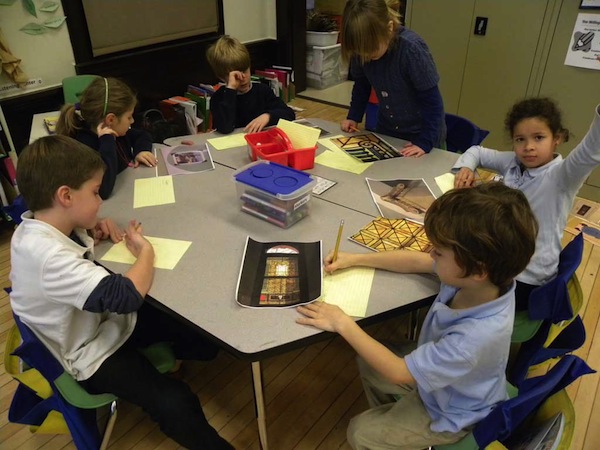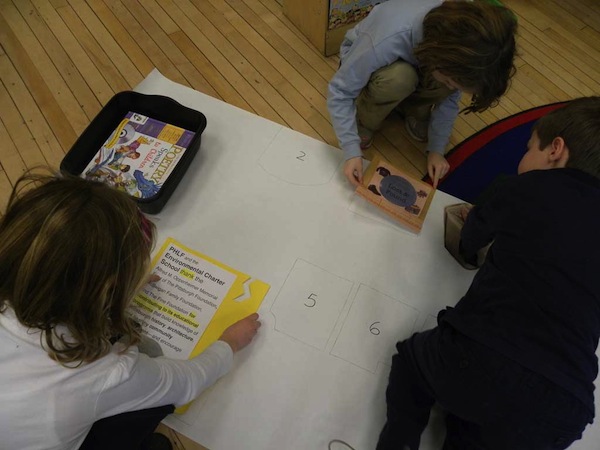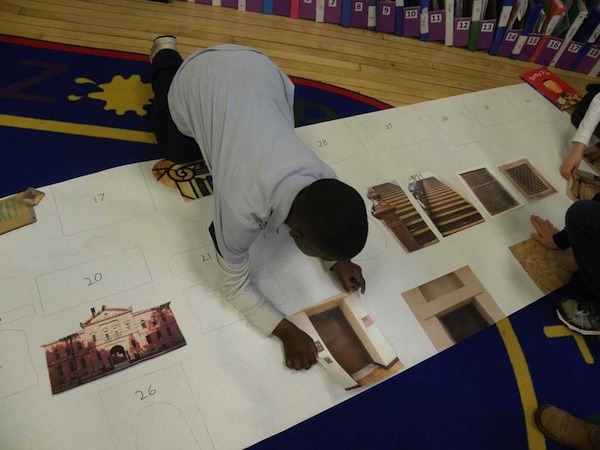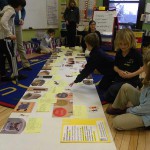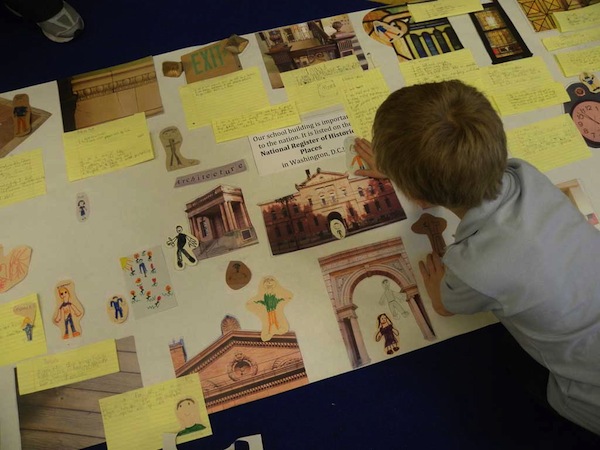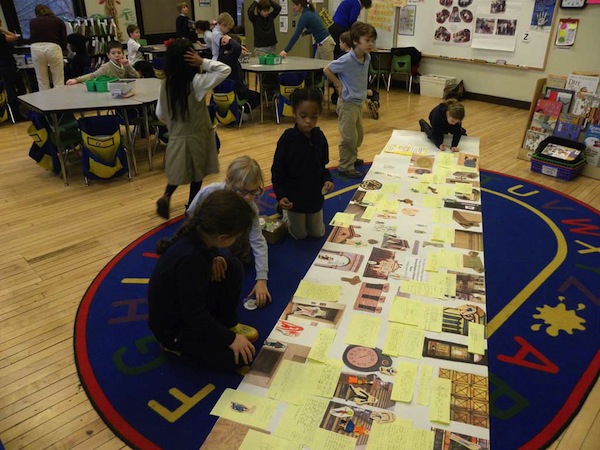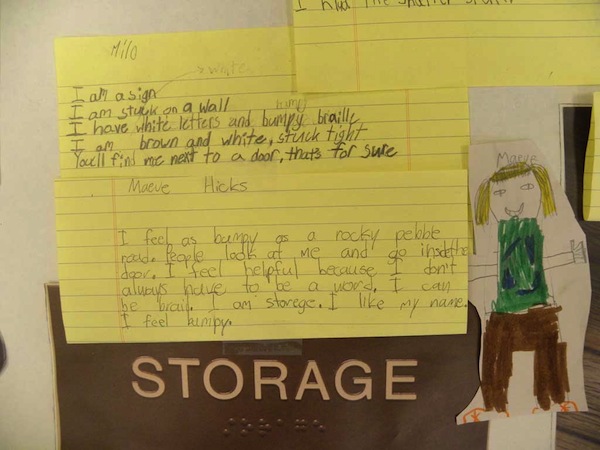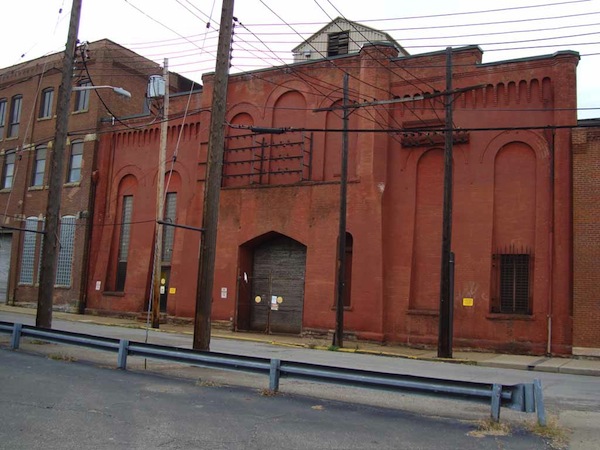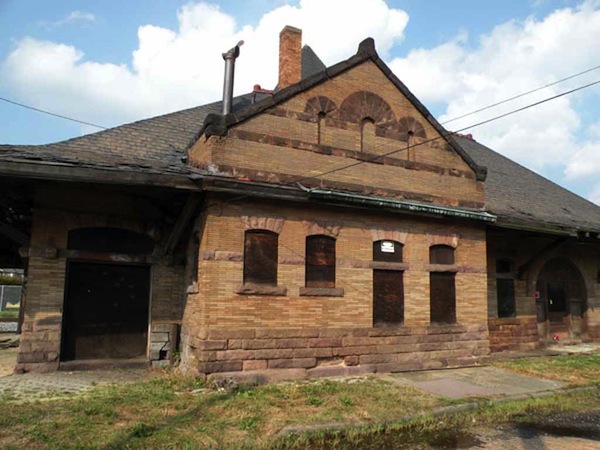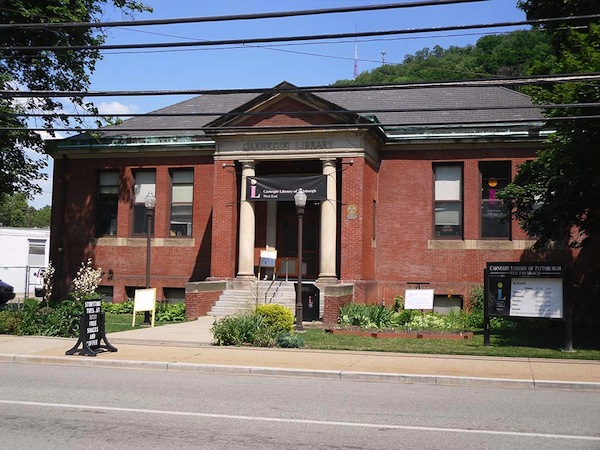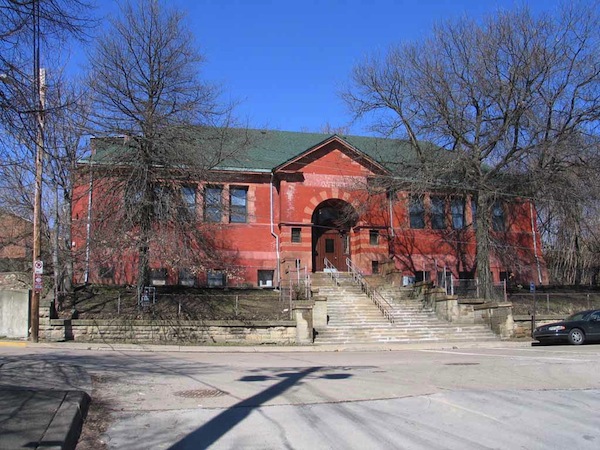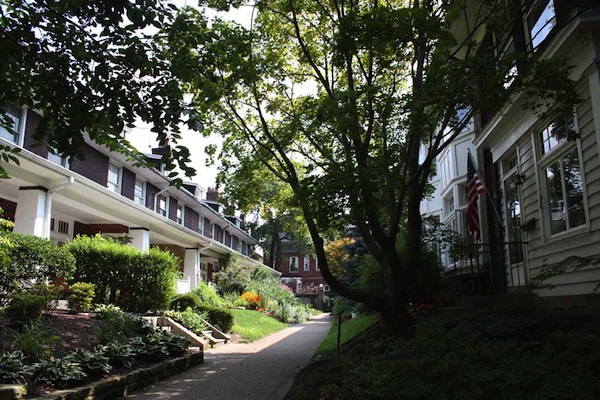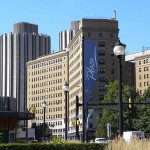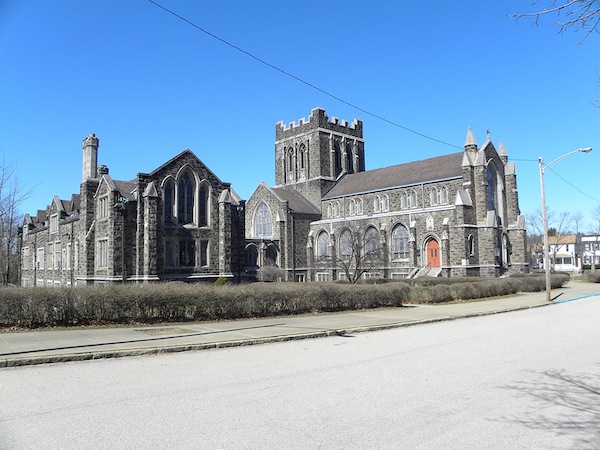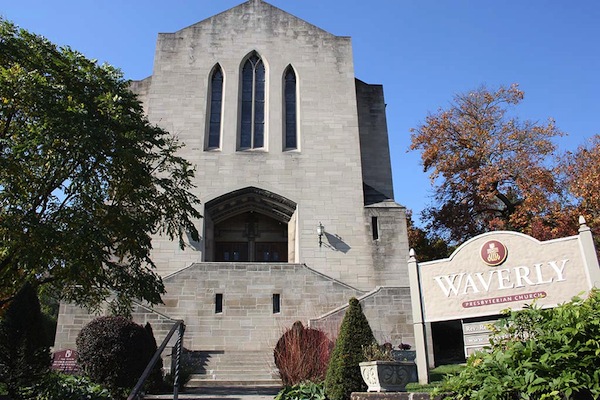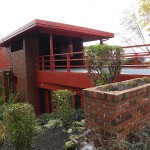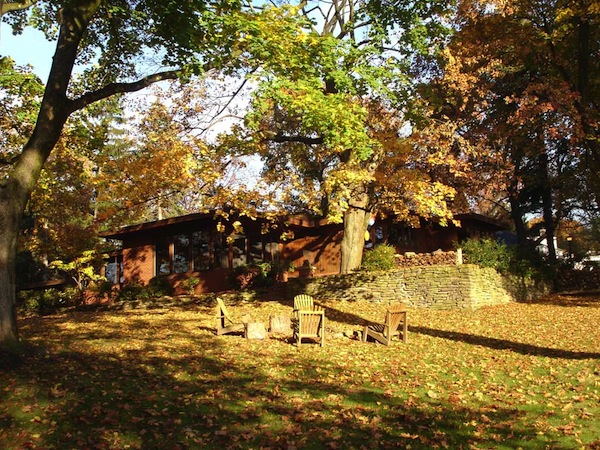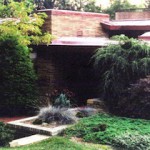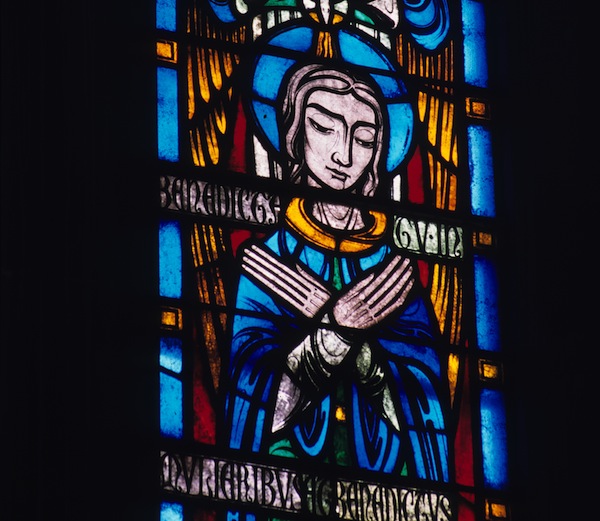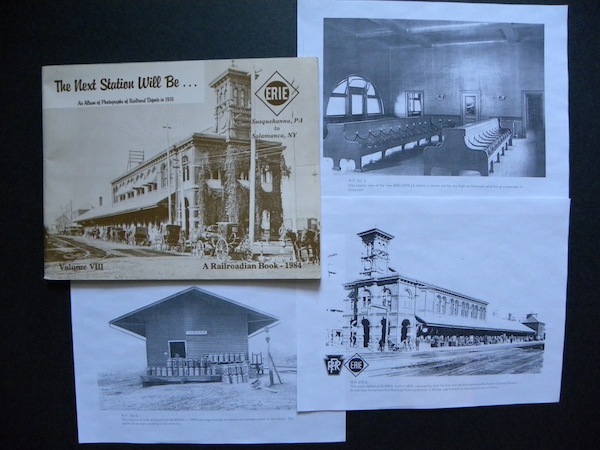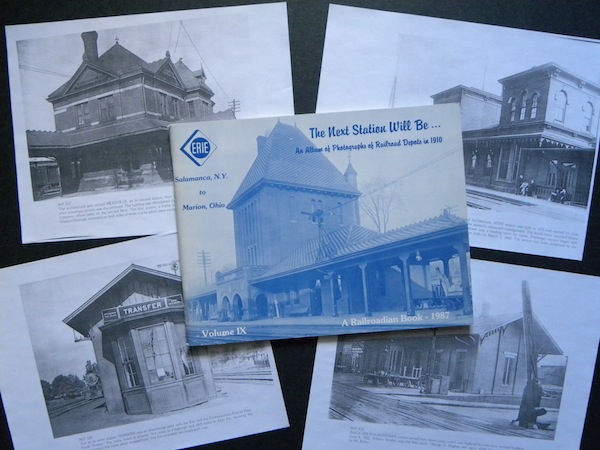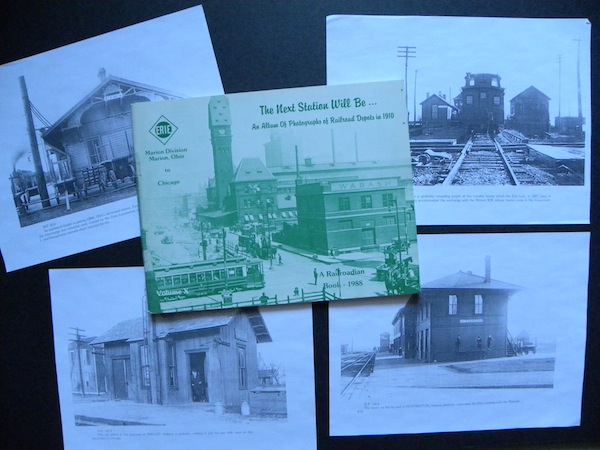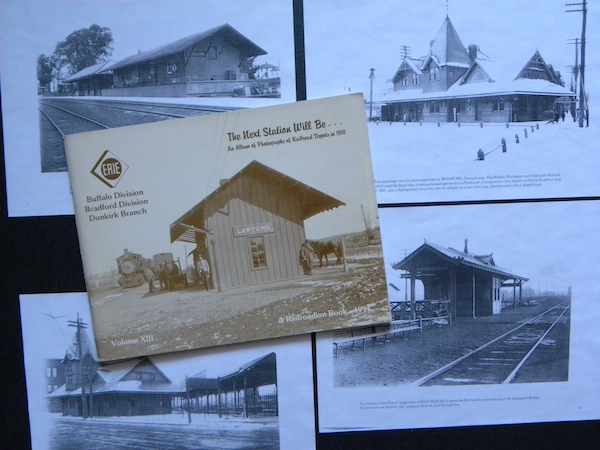
Category Archive: PHLF News
-
Exploring Your School, Community, & Careers with PHLF—II
On January 14 and 15, fourth-grade students from Pittsburgh Banksville and Pittsburgh Phillips participated in PHLF’s award-winning career awareness program.
“The students love being able to see, touch, and pretend with the tools,” wrote one teacher. This was “real live learning, specific to our school,” another teacher added. For more information on PHLF’s career awareness program, “People Who Work to Improve Our Communities,” contact Karen Cahall.
PHLF thanks The Fine Foundation for supporting its educational programs this year, including presentations of its career awareness program.
-
Exploring Your School, Community, & Careers with PHLF—I
First- and second-grade students at the Environmental Charter School (309 S. Braddock Avenue) explored their school and neighborhood with PHLF staff and docents on January 8 and 16. The photo gallery below shows the program that included a neighborhood walk, school exploration, poetry writing, and mural-making. “Having the kids use our building as inspiration for poetry directly complemented our poetry unit,” noted one teacher. Funding from the McSwigan Family Foundation helps underwrite PHLF’s time in creating site-specific programs for area schools.
-
PHLF Work in Main Street Communities
PHLF had yet another busy and productive year working to help rejuvenate traditional Main Street business districts in Allegheny and Butler Counties, where it continues to tailor specific technical assistance to communities for new business development and building improvements.
PHLF continues its role administering Allegheny County’s Allegheny Together program. Highlights from 2012 include:
- Two communities, Aspinwall and Homestead, joined the other 9 communities in the program: Bellevue, Bridgeville, Carnegie, Coraopolis, Dormont, Elizabeth, Stowe, Tarentum, and Verona.
- PHLF staff developed and completed an overall Strategic Plan for Aspinwall and Homestead, including design guidelines to inform future improvements in each community, traffic and parking analyses, and other marketing data to determine the trade area and retail opportunities.
- PHLF delivered technical assistance to more than 100 businesses and communities including design assistance, interior design consultations, loan and grant opportunities, and tax abatement programs to spur economic development.
- PHLF completed more than 50 façade renderings, construction specification sheets, and construction management services.
- PHLF assisted in the implementation of more than $700,000 of façade improvements across the Allegheny Together communities, and in addition, helped Mt. Oliver and Millvale renovate properties in accordance with each town’s design guidelines.
PHLF completed Year 1 of the Butler Neighborhood Partnership Program with financial assistance from Armstrong and Huntington Bank. Major projects included:
- Completing plans for three downtown Butler properties for renovation to upper floor housing.
- Completing a comprehensive plan to improve the connection between downtown Butler and The Butler-Freeport Community Trail to drive trail-users into downtown to shop and dine.
- Completing streetscape improvement projects in and around downtown Butler to improve the connections between key residential corridors and the main street. Improvements focused on three areas and consisted of sidewalk resurfacing, landscaping, and welcome signage.
PHLF is excited to continue the momentum in each of these communities in 2013 and beyond.
-
PHLF Awards 16 Historic Landmark Plaques
PHLF Trustee Cynthia Underwood, Vice-Chair of the Historic Plaque Designation Committee, announced 16 Historic Landmark Plaque awards, as a result of the Committee’s meeting on December 10, 2012. The 16 plaques recognize some 47 structures.
For the first time, the Committee also considered plaque applications from counties surrounding Allegheny, especially if the applicant site had some connection to the Greater Pittsburgh region––through property ownership, for example, or through the work of a distinguished Pittsburgh architect.
The 16 “Historic Landmark” sites (shown in order below) are listed here in chronological order:
- Chalfant house, 89 Locust Street, Etna, c. 1850
- 4841 Ellsworth Avenue, house (Alexander M. Guthrie), Shadyside, c. 1870
- Fourth Avenue National Register Historic District (Boundary Increase), Downtown, c.1871-1934 [Forbes Avenue south side between Smithfield and Wood Streets; and extending along Wood Street to Fifth Avenue].
- Allegheny City Electric Light Plant––1895 Building, 822 Riversea Road, Central Northside, David Hunter, Jr., Engineer
- Pittsburgh & Lake Erie Railroad Coraopolis Station, Neville Avenue and Mill Street, Shepley, Rutan & Coolidge, 1895
- West End Branch, Carnegie Library of Pittsburgh, 47 Wabash Avenue, West End, Alden & Harlow, 1899
- Wylie Avenue Branch, Carnegie Library of Pittsburgh (now First Muslim Mosque of Pittsburgh), 1911 Wylie Avenue, Hill District, Alden & Harlow, 1899
- St. Andrew’s Episcopal Church complex, 5801 Hampton Street, Highland Park, Carpenter & Crocker, 1905-09
- St. James Terrace, 5300-5312 St. James Terrace, Shadyside, John E. Born, builder, 1915
- Schenley Apartments, (now Schenley Quadrangle, University of Pittsburgh), 3959 Forbes Avenue, and 4000 Fifth Avenue, Oakland, Henry Hornbostel with Rutan, Russell & Wood, 1922-23
- First United Methodist Church of McKeesport, Cornell Street and Versailles Avenue, Charles W. Bolton & Son (Philadelphia), 1924-25
- Waverly Presbyterian Church, 590 S. Braddock Avenue, Point Breeze, Ingham & Boyd, 1928-30
- Joseph Vokral house, 1919 Woodside Road, Shaler Township, Quentin S. Beck, 1936
- Mr. & Mrs. Jack Landis house, 2717 Mount Royal Road, Squirrel Hill, Peter Berndtson and Cornelia Brierly, 1947
- Miller–Cole house, 629 Oakhill Lane, Greensburg, Westmoreland County, Peter Berndtson and Cornelia Brierly, 1950-52
- Mr. & Mrs. David Giles house, 1 Saxman Drive, Latrobe, Westmoreland County, Peter Berndtson and Cornelia Brierly, 1952
PHLF created the Historic Landmark Plaque program in 1968 to identify architecturally significant structures and designed landscapes throughout the Pittsburgh region. An Historic Landmark Plaque does not protect a building from alteration or demolition. To date, 562 plaques have been awarded to significant buildings, districts, landscapes, and structures throughout Allegheny County and now Westmoreland County that are 50 years old or more.
For further information, visit www.phlf.org or contact Frank Stroker, program administrator: frank@phlf.org; 412-471-5808, ext. 525.
-
PHLF Apprentices Show Solutions for Homestead Lot
Seventeen high school students from throughout Allegheny County presented their proposals for a vacant lot at Eighth Avenue and Amity Street in Homestead. Ideas included the following: a greenhouse and grocery (shown here); the Oasis (a frozen yogurt and radio station); a multi-purpose community center; a therapeutic psychiatric office and snack shop; a bakery and branch library; a bike shop (with a running track and skylight); Rusty’s Restaurant; the Steel City Diner; and an apartment building with a rooftop restaurant.
“The purpose of the design challenge was to give the students experience in developing a program that both serves the community and attracts people from the Waterfront to the historic main street,” said Louise Sturgess of PHLF. “They had strong, creative ideas and made convincing arguments for their program. We were impressed.”
The final presentations on December 11, 2012, were part of the annual Architectural Apprenticeship offered by PHLF through the Allegheny Intermediate Unit. PHLF thanks the following people for commenting on the student projects: Architects Bob Baumbach, Raymond Bowman, and Shaun Yurcaba; Lance Chimka and Zachery Wilfong (Allegheny County Economic Development); Davy Jones, Homestead resident; and Erica Rogers (Mon Valley Initiative).
-
Thank You Fall Interns
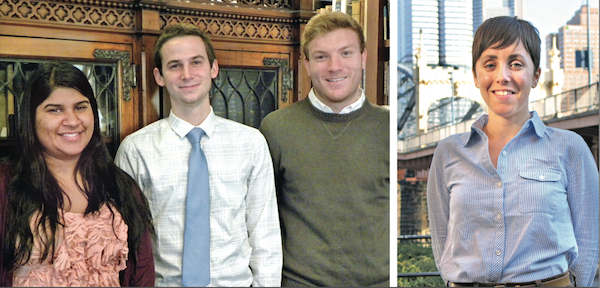
Five interns from local universities and graduate schools assisted PHLF from September through December 2012 with the Historic Religious Properties Conference, Architectural Apprenticeship, Architectural Design Challenge, and Allegheny Together Main Street Program. We thank Neha Patel, Eric Kobal, Kevin Boyle, and Lisa Christopher (all shown here), and Jenna Briasco.They also continued digitizing the Allegheny County survey, assisted on many walking tours, and represented PHLF at various presentations and events. They created architectural renderings and drawings, conducted historical research, and contributed their knowledge, energy, and enthusiasm to our grateful staff.
- “Interning with PHLF this semester has given me an invaluable experience that I will be able to apply to my future endeavors. The Architectural Apprenticeship program, the community tours, and the research opportunities expanded my knowledge in my field of choice and allowed me to learn more about and appreciate Pittsburgh.”
––Kevin Boyle, University of Pittsburgh (Urban Studies; Sociology)
- “Assisting with the walking tours has not only provided me with new experiences in navigating Pittsburgh but has also opened my eyes to a variety of places I would not have explored on my own.”
––Jenna Briasco, University of Pittsburgh (Historical Preservation/Italian)
- “The most memorable moment of my internship at PHLF was having the opportunity to meet David Lewis (founder of Urban Design Associates). I continue to be extremely impressed by the knowledge and enthusiasm the staff and docents have at PHLF. This was truly a rewarding experience, and gave me a deeper appreciation for the work PHLF does. I have always been a proud Pittsburgher and my experience as an intern has broadened my awareness of Pittsburgh’s rich history.”
––Lisa Christopher, Chatham University (Interior Architecture)
- “Interning with PHLF this fall has been a truly rewarding experience. The aspect of the internship which I’ve enjoyed most is the varied nature of the work at PHLF. Never have two days been exactly the same. Being able to go out into various communities and meet with people has been an absolute pleasure. The opportunity to use the resources of PHLF in order to aid in research for my Honors Thesis also has been a privilege. Finally, I would like to say that the people at PHLF will leave the most lasting impression on me. They have served as models of professionalism, which I aspire to emulate in my future career.”
––Eric Kobal, University of Pittsburgh (Architectural Studies)
- “Interning with PHLF has been a learning experience in regards to the history of Pittsburgh as well as the tremendous efforts made by the Foundation to ensure the preservation of this city’s history. Teaching students and working on projects has given me a sense of accomplishment due to the contributions I made. Being a participant in these endeavors and being in an environment where there is great passion in the work being done has been an inspiration to me.”
––Neha Patel, University of Pittsburgh (Architectural Studies/Anthropology)
Five more interns begin with PHLF this January. We look forward to meeting them and involving them in our work. To learn more about volunteer internships with PHLF, click here.
-
Your Gift Enables PHLF to Help More Historic Religious Properties
More funds are needed to fulfill the funding requests PHLF has received through its Historic Religious Properties (HRP) Program from 25 congregations in Allegheny County who hope to undertake important preservation work this year. Proposed work includes restoring stained glass; repairing masonry, stone work, and roofs; and replacing gutters.
Your contribution will enable PHLF to award more matching grants to architecturally significant places of worship that serve their communities every day throughout the year. Please contribute by clicking here or mail a check, payable to PHLF and referenced HRP, to Mary Lu Denny, PHLF, 100 W. Station Square Drive, Suite 450, Pittsburgh, PA 15219. We thank you!
PHLF’s Historic Religious Properties Committee, chaired by Trustee George Dorman, will meet early in the new year to review the grant applications and approve a number of matching grants of between $3,000 and $10,000 to help fund critical exterior improvements. PHLF also awards technical assistance grants to help historic religious properties assess and prioritize building maintenance and restoration needs.
PHLF’s matching grant program is the only place most historic religious properties can turn to for help in making critical exterior repairs to their buildings. By encouraging careful, informed, and economical stewardship, PHLF helps ensure that these architecturally significant places of worship will be taken care of for future generations. We need your help to make this program a real success for the historic religious properties that have applied to PHLF for help. Thank you.
-
Fairbanks Feature: The Next Station Will Be . . . (the second in a series of three)
James D. Van Trump Library | Frank B. Fairbanks Transportation Archive | Fairbanks Features
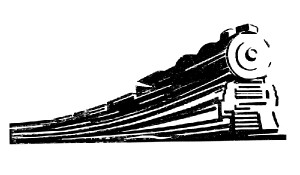 Showcasing a variety of materials located in the Frank B. Fairbanks Rail Transportation Archive
Showcasing a variety of materials located in the Frank B. Fairbanks Rail Transportation ArchiveNo. 16 Presentation
Fairbanks Feature: The Next Station Will Be . . . (the second in a series of three)
This feature in “A New Train of Thought” is the second in a three-part series highlighting the 13 soft-bound booklets of The Next Station Will Be . . . , published by The Railroadians of America, Inc. (For the first of the three articles, please read Fairbanks Feature 15.)
The glass plate negatives for these photographs were discovered in the 1960s, after having been forgotten since they were taken in the years 1909 to 1911. While many of the original 500 plates were lost, enough remain to give us this great record of rail history.
The set of 13 booklets gives rail maps of the major lines during the 1910s that used these stations. The sample pages of timetables that pertain to the stations are great finds for the early rail history researcher. Copies of the posters that were popular during these times for the rail lines seem to be modern in their presentation––and yet, the lines have been gone for 50 or more years.
Each of these booklets gives a short rail line history of the various lines that used the tracks for these stations. It is easy to get overwhelmed when reading about the buying and selling of smaller lines for the bigger lines and the constant court cases resulting between lines that wanted to prevent other lines from coming into existing areas. It’s a wonder the rail system functioned at all, given the long, ongoing court cases; the illegal deals; the lawyers who pitted themselves against each other; and the railroad robber barons who bought, sold, and merged lines with little regard for the train-riding public. Keeping a proper scorecard for the rail line name changes and mergers almost requires modern technology.
After seeing the following photographs from books 8 through 13, you’ll be encouraged to examine all the photographs in all 13 booklets. So much of the life of our nation in the early 1900s revolved around these simple railroad stations.
- Book 8––Elmira, NY; Almond, NY; Wellsville, NY
- Book 9––Meadville, PA.; Transfer, PA; Youngstown, Ohio; Kent, Ohio
- Book 10––Lima, Ohio; Magley, Indiana; Huntington, Indiana; Wilders, Indiana
- Book 11––Lambs Creek, PA; Greycourt, NY; Middletown, NY; Websters, NY; Blooming Grove, NY
- Book 12––HJ Tower at Bay Head Jct., NY; Long Branch, NY; Asbury Park-Ocean Grove, NY; Manasquan, NY
- Book 13––Bradford, PA; Niagara Falls, NY; East Buffalo, NY; Collins, NY
The Frank B. Fairbanks Rail Transportation Archive is open by appointment on Mondays, from 10:00 a.m. to 5:00 p.m. Use of the archive is free to PHLF members (one of the benefits!); non-members are assessed a $10 use fee.
The Archive is located on the fourth floor of The Landmarks Building at Station Square, in the offices of the Pittsburgh History & Landmarks Foundation.
To schedule an appointment, email the Librarian James Halttunen: James@phlf.org


